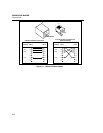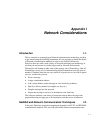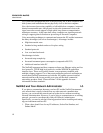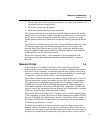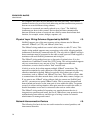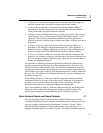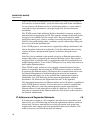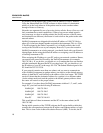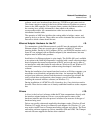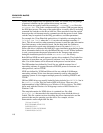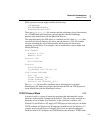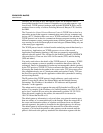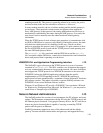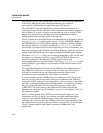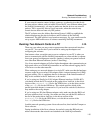
2640A/2645A NetDAQ
Users Manual
I-8
ID portion to be the higher order 24 bits of the IP address (a class C address).
Using the Subnet Mask, the TCP/IP software is able to detect if a destination
address is in the local subnet or if the packet must be sent to another subnet
through a Router or Gateway.
Networks are segmented by use of an active device called a Router (Gateways and
hubs sometimes have router capabilities.) When a host on one subnet wants to
send a message to a host on another subnet (the Net ID sections of the IP source
and destination are different), the Router is used to deliver the packet to the other
network subnet.
NetDAQ instruments are shipped with a default IP address of 198.178.246.bcn,
where bcn is the base channel number assigned to the instrument. This is a Class
C Net ID assigned to the Fluke Corporation, so it is highly unlikely that it will
overlap with a Net ID in use at your company. However, if you want to attach a
NetDAQ instrument to an existing network, you should check with your Network
Administrator before using the default IP address or assigning a new IP address to
a NetDAQ instrument or PC.
When assigning the IP address to your PC, unless your network contains a Router,
you must use the same Net ID used by the NetDAQ instruments (for example,
198.178.246.z). If you do this, you should set z to a number that does not interfere
with the instruments. Because the BCN can range from 1-99, you should set z of
the IP address of your PC in the range 101-254. The Subnet Mask assigned to the
PC should be 255.255.255.0.
If your network contains more than one subnet, and you want to communicate
with a NetDAQ instrument in another subnet, you need to set the default gateway
address in both the PC and NetDAQ to the address of the local router. The TCI/IP
stack will detect that the destination address for a packet is in a different subnet
(via the subnet mask) and send the packet to the default gateway address where
the router will route it to the proper subnet.
For example, if you have three NetDAQ instruments with bcn’s 1, 2, and 3, and a
single PC, you could set the following IP addresses:
NetDAQ #1 198.178.246.1
NetDAQ #2 198.178.246.2
NetDAQ #3 198.178.246.3
Host PC 198.178.246.101
This would place all three instruments and the PC in the same subnet (net ID
198.178.246).
During initial operation of the TCP/IP software the IP section builds a table that
contains the correspondence between the IP address and Ethernet address of each
host. This is done via the Address Resolution Protocol (ARP). To do this, the IP



